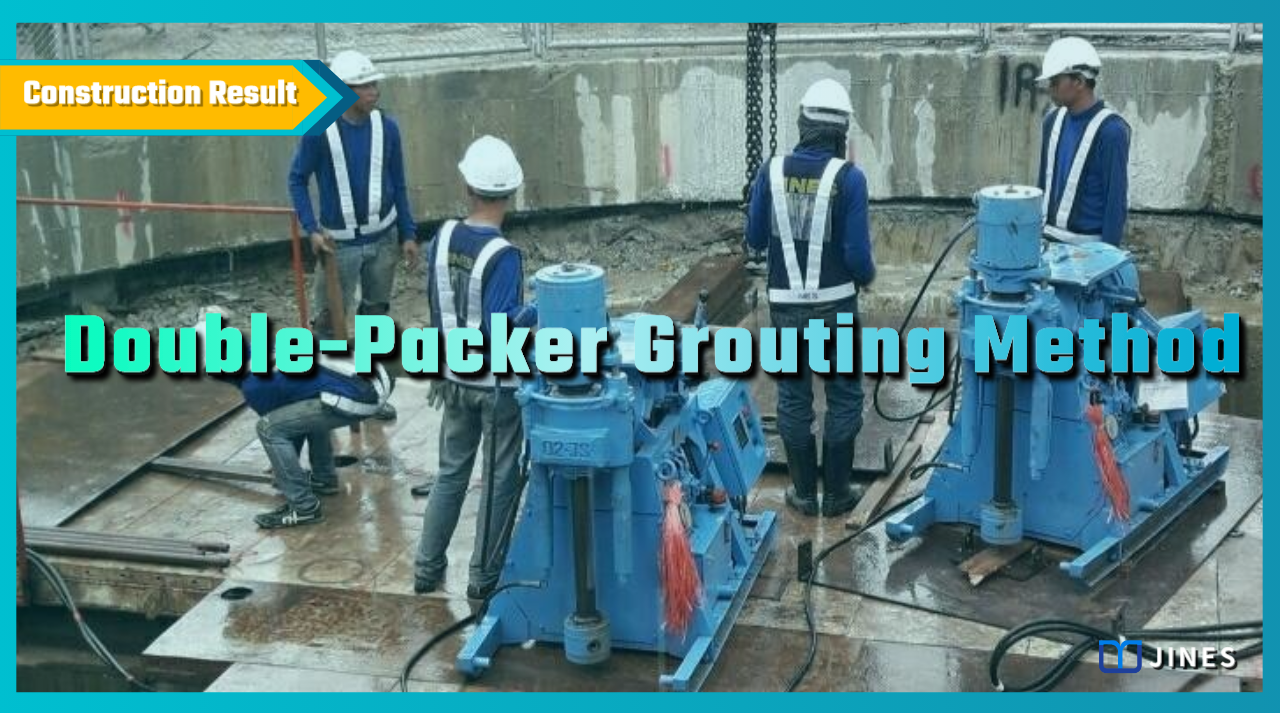
1. Double-Packer Grouting Method
Double-Packer Grouting, also known as Marshall Pipe Grouting or Double-Ring Grouting, is a low-pressure injection technique that allows for repeated injection of different grout materials.
It involves the installation of outer grouting pipes in the ground at regular intervals, typically equipped with check rubber sleeves (@33.3cm or @50cm). These pipes are accompanied by movable upper and lower packers that can be inflated or filled with water to seal off specific sections of the outer grouting pipes.
This setup allows for multiple injections of different grout materials at various locations. Double Packer Grouting is primarily used in various applications such as reducing the permeability of the ground, sealing water leakage, ground improvement, liquefaction prevention, and soil remediation.
The grout material typically permeates the soil particles’ voids in sandy layers and exhibits a vein-like infiltration distribution in clay or silty soil layers. This method is suitable for a wide range of applications as it involves low-pressure permeation, causing minimal disturbance to the ground. 
—
2-1. Double-Packer Grouting – Applications
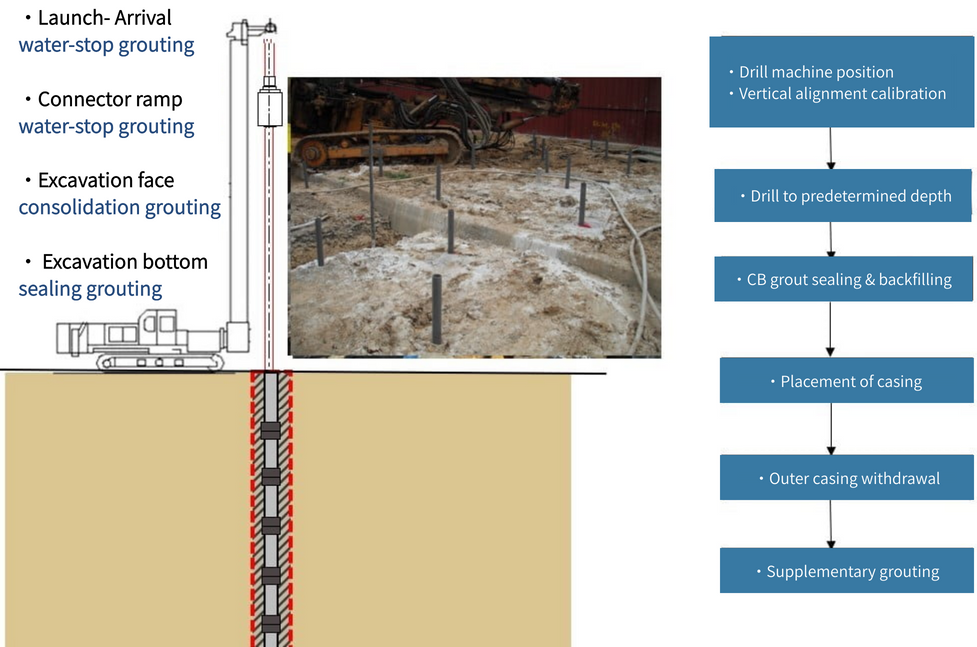
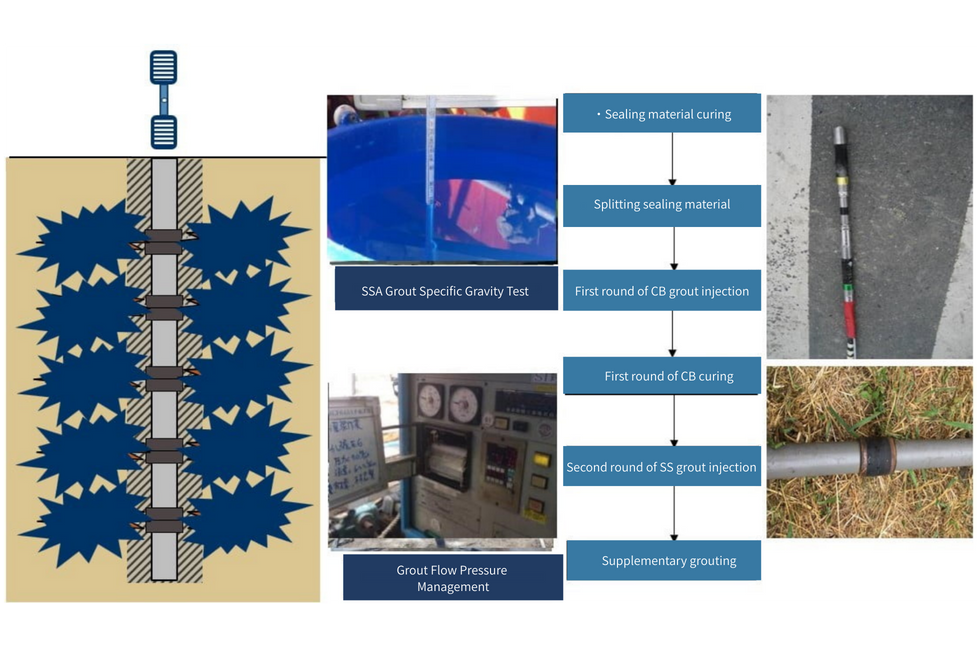
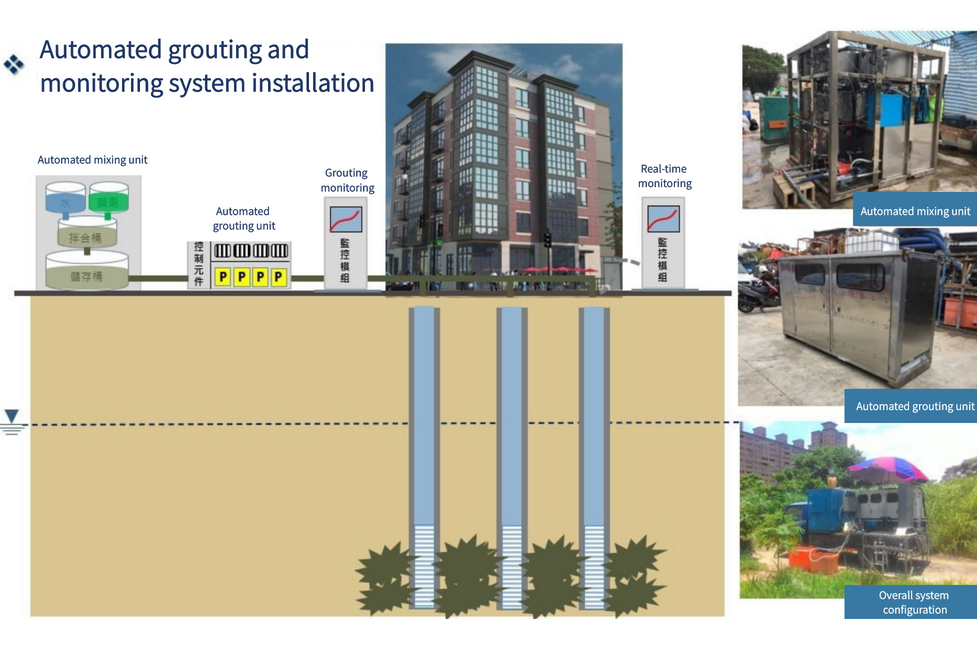
2-2. Double-Packer Grouting – Key Execution Points
- Install casing
- Inject CB grout (to support the outer casing)
- Insert Marshall Pipe
- Remove casing
- Replenish CB grout (to prevent back-flow)
- Curing (approximately 2-3 days)
- Water flushing (to prevent abnormal injection pressure)
- Insert Double-Packer pipe and inject CB grout (to fill voids, consolidate weak zones, and neutralize soil alkalinity)
- Insert Double-Packer pipe and inject chemical grout, micro-fine cement, silica sol, soil stabilizers, etc.
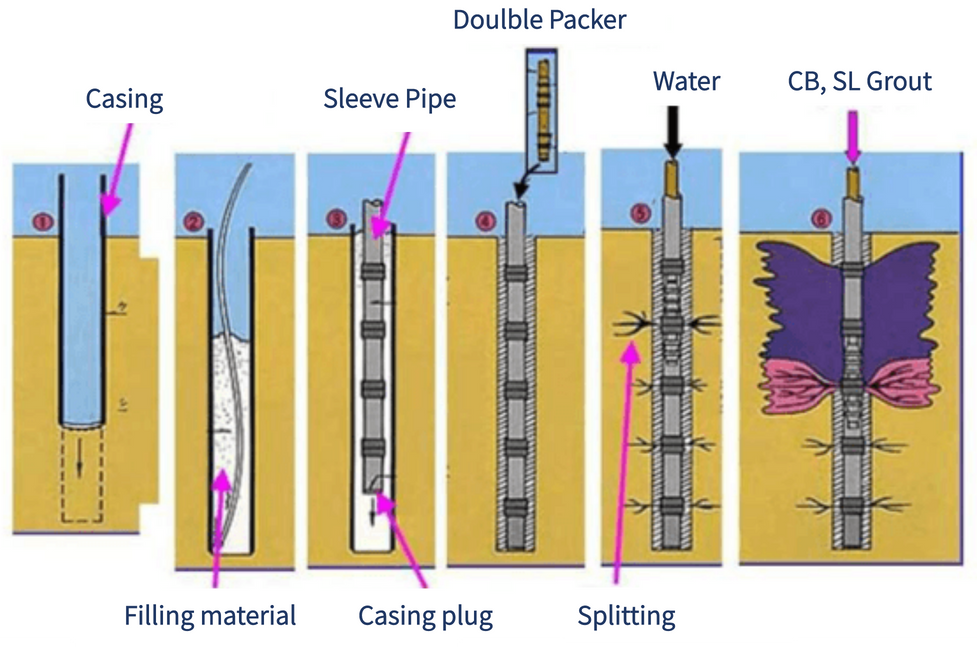 3. Double-Packer Grouting – Advantages and Disadvantages Advantages:
3. Double-Packer Grouting – Advantages and Disadvantages Advantages:
- Grouting can be performed in layers and multiple injections within the casing (Marshall pipe).
- Drilling can be conducted using drilling rig, with no restriction on improvement depth.
- Different types of grout materials can be injected at the same location based on the improvement objectives.
- The casing can be installed vertically or horizontally according to the requirements.
- The grouting pressure is low, resulting in minimal disturbance to the surrounding soil and nearby underground structures.
Disadvantages:
- Grouting equipment is numerous and large in size, requiring a larger working space.
- The drilling process can generate noise and dust, which needs to be mitigated with specialized equipment.
- The diameter of the drilled hole is slightly larger.
- Equipment must be operated by experienced personnel.
4. Double-Packer Grouting Main Equipment
- Drill rig or large-diameter rotary drilling machine
- Generator
- Air compressor
- Grout pump
- High-pressure water pump
- High-speed grout mixer
- Low-speed grout mixer
- Flow divider
- Material storage tank
- Mixing tank
- Flow divider
- Double-Packer grouting equipment (internal grouting pipe)
- Flow meter
- Pressure gauge
- Automatic recording equipment
- Permeability testing equipment
- Sampling equipment
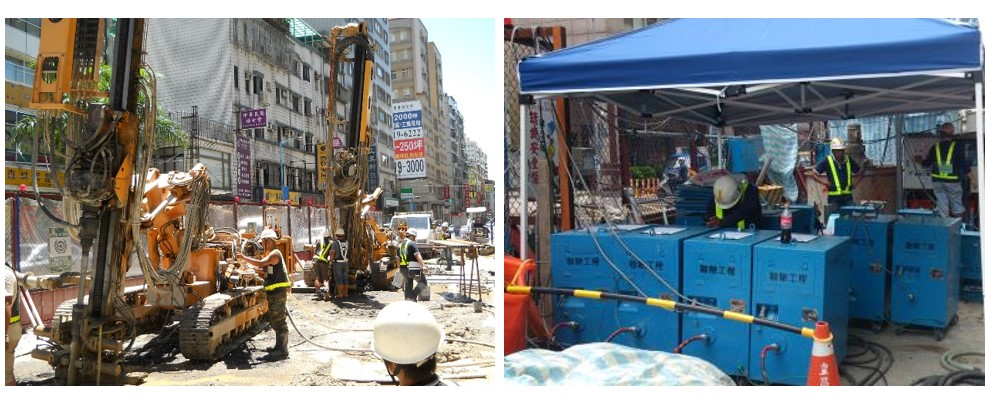
5. Commonly Used Materials
Leak Stop:
- Ultra-rapid setting SSA chemical grout material (long-lasting, easy control of curing time, resistant to salt and alkali, suitable for organic environments)
- Rapid-setting SSA chemical grout material (long-lasting, easy control of curing time, resistant to salt and alkali, suitable for organic environments)
- Rapid-setting #3 water glass grout material (short-term use)
- Ultra-rapid setting FLW cementitious grout material (long-lasting, easy control of curing time, resistant to salt and alkali, high strength)
- Rapid-setting LW cementitious grout material (short-term use, high strength)
Ground Permeability Coefficient Reduction:
- Slow-setting SSA chemical grout material (long-lasting, resistant to salt and alkali, suitable for organic environments)
- Rapid-setting #3 water glass grout material (short-term use)
- Silica sol grout material (single-component, easy to handle)
- Micro-fine cement (long-lasting, high strength)
Ground Improvement:
- Cementitious grout material (long-lasting, fracture or vein improvement, increase strength)
- Micro-fine cement (long-lasting, permeation or vein improvement, increase strength)
- CB grout – cement-bentonite grout (long-lasting, compaction improvement, fill voids, consolidate weak zones, alkaline ground)
- Silica sol (long-lasting, permeation or vein improvement, enhance ground friction)
For liquefaction prevention and control: Slow-setting SSA chemical grout material (long-lasting, resistant to salt and alkali, suitable for organic environments) Micro-fine cement (long-lasting, resistant to salt and alkali, suitable for organic environments) Soil Pollution Remediation: It is necessary to choose appropriate grout injection materials based on the type of pollution. Water, chemical agents, metal powders, microorganisms, others
6. Installation Method for Double-Packer Grouting
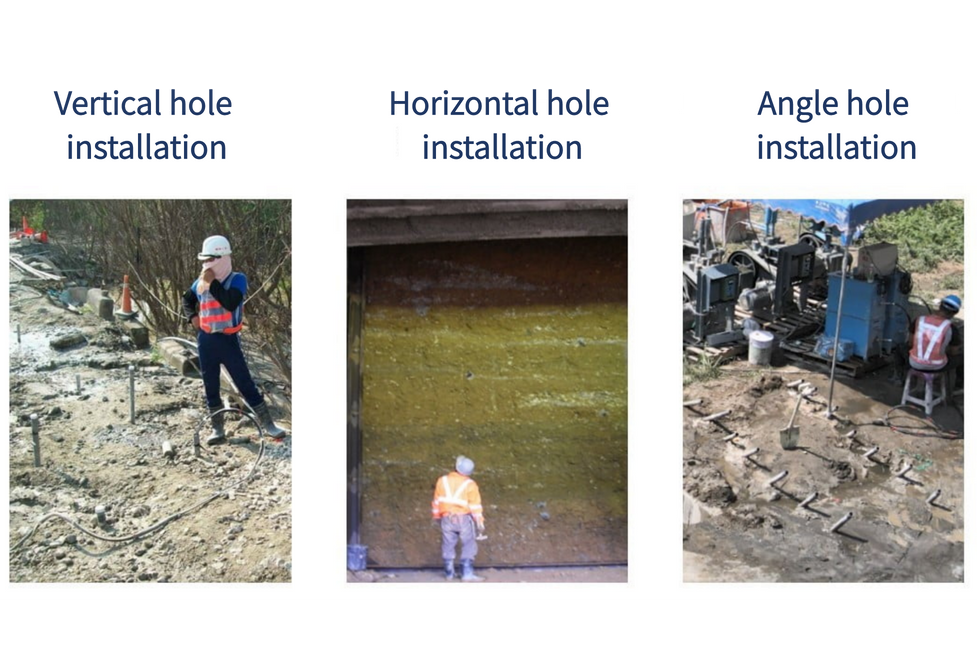
7. Double-Packer Grouting – Case Study:
Ground Improvement for TBM Underground Cable Tunneling & Access Shaft
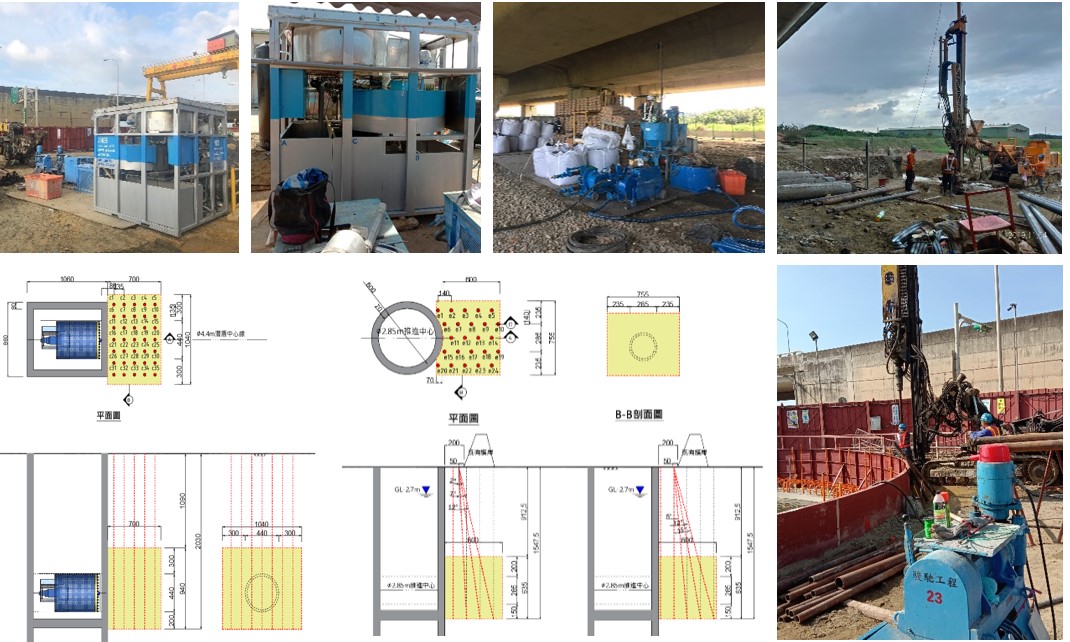
MRT Tunnel Excavation at Launch & Shallow Overburden Section
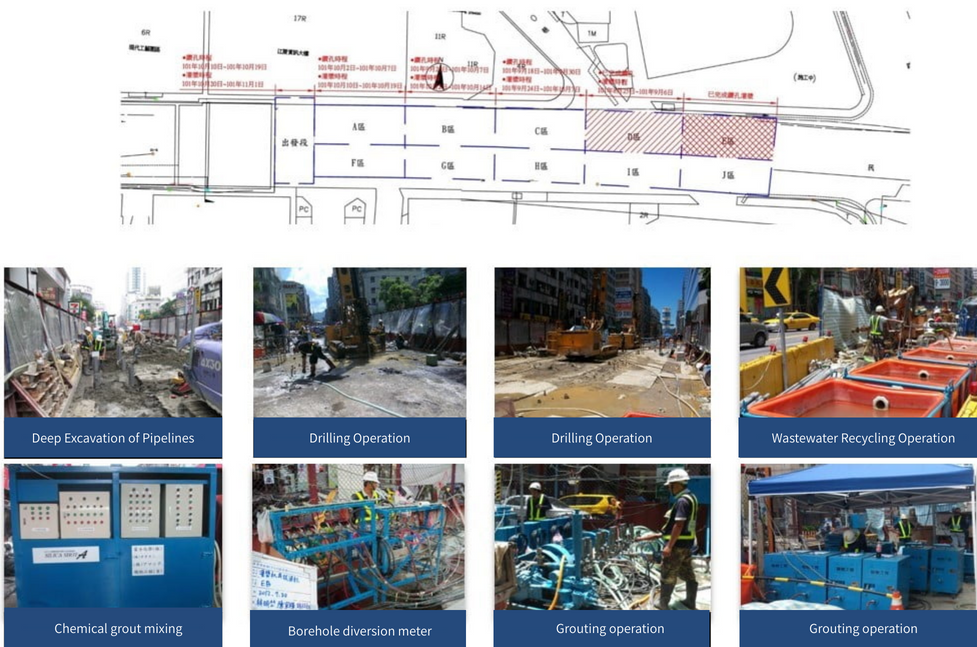 Ground Improvement for MRT Tunnel Connector Ramp
Ground Improvement for MRT Tunnel Connector Ramp
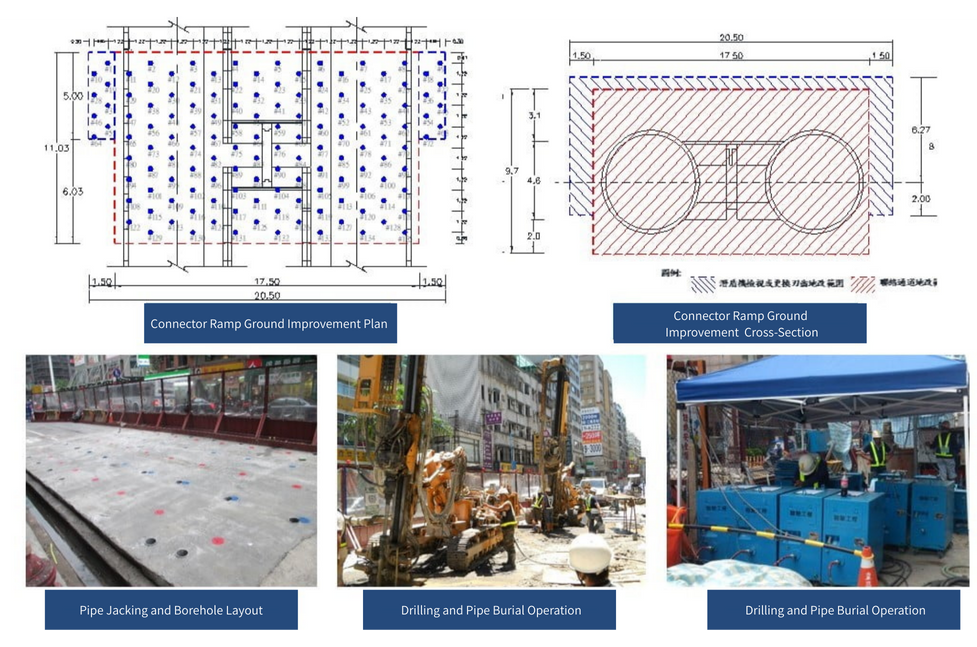
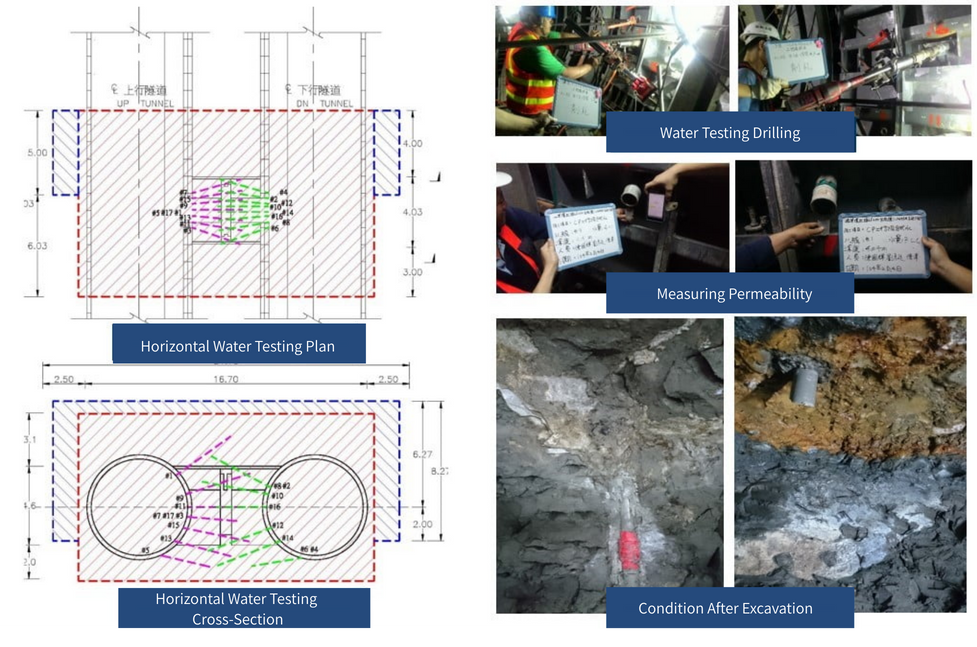
Ground Improvement for Horizontal Site of MRT & High-Speed Rail Station Connector Ramp Construction Project
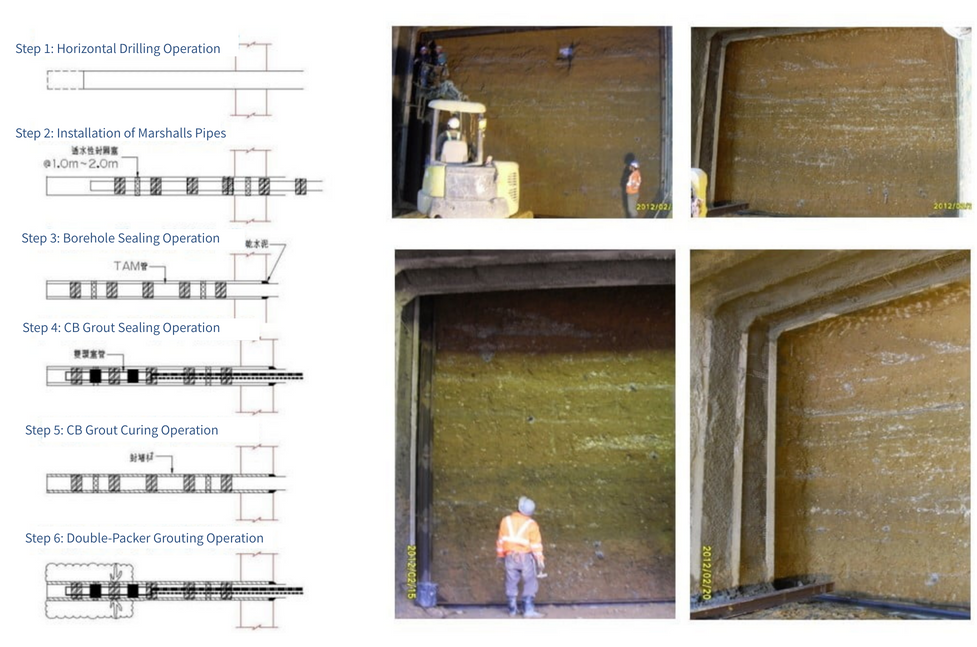
Ground Improvement for TBM Tunnel Launch / Arrival Site, & Connector Ramp
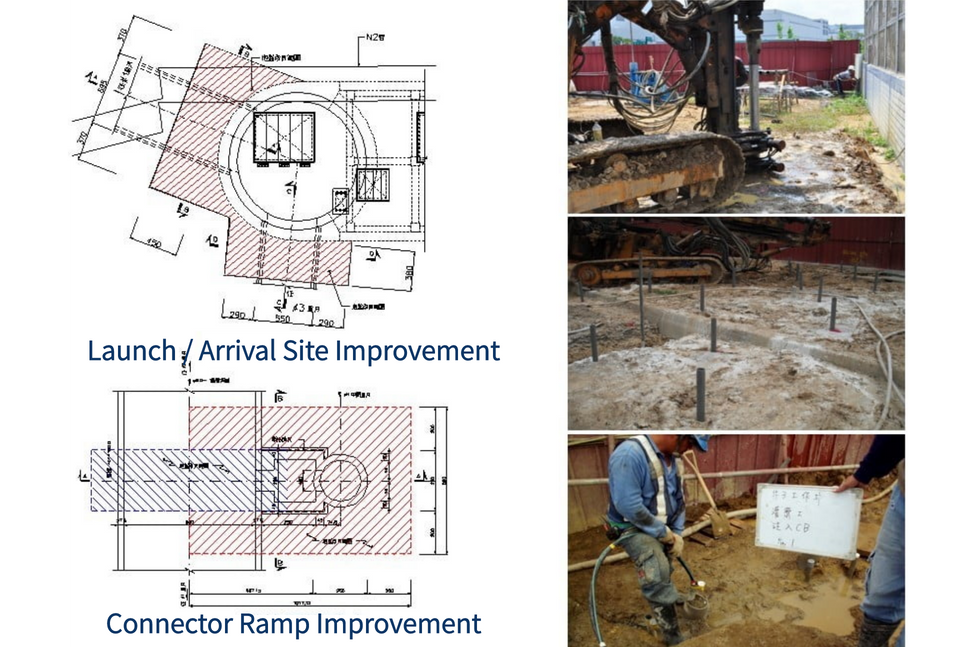
Ground Improvement of Colluvial Layer at Highway Tunnel Entrance
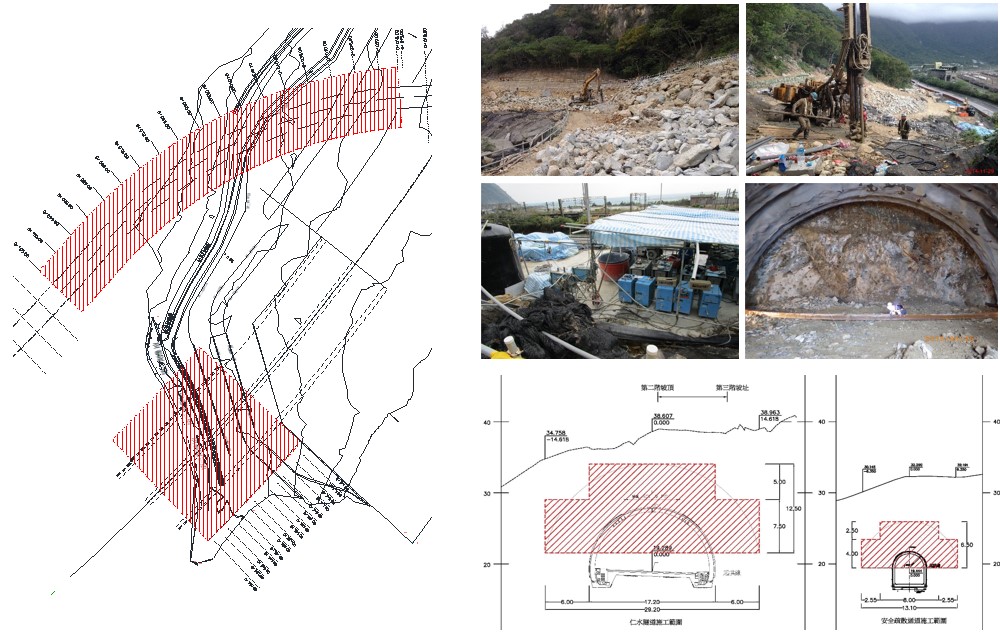
Reinforcement & Seepage Control for Coastal Riprap Cofferdam
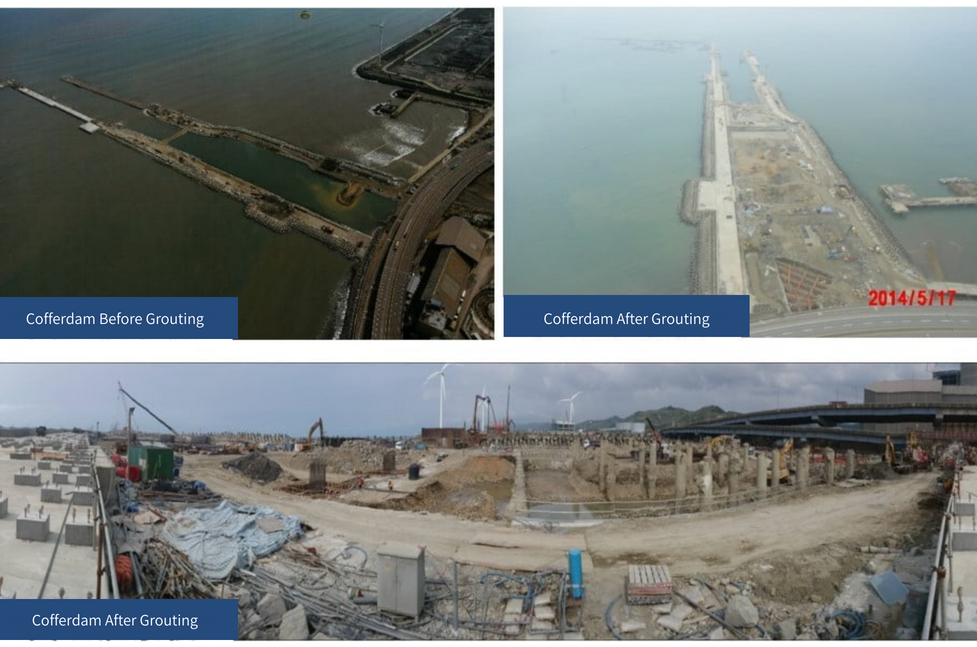
Liquefaction Prevention & Mitigation
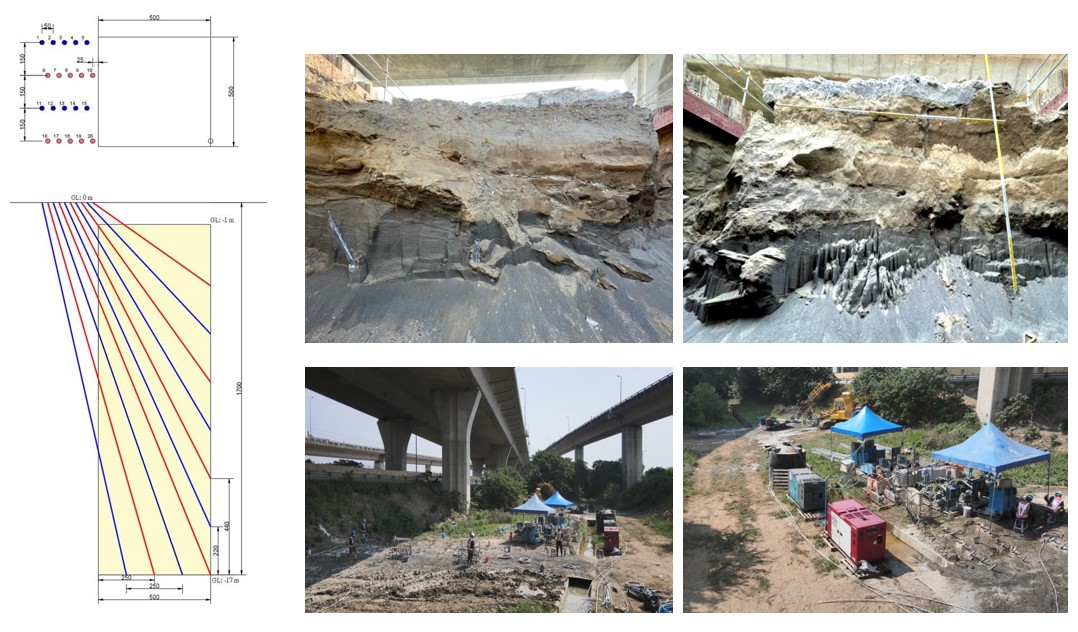 【Purposes of Grouting】
【Purposes of Grouting】
- Increase Bearing Capacity.
- Improve Shear Strength.
- Enhance Consolidation.
- Prevent Soil Liquefaction.
- Seal Water Seepage.
- Prevent or Mitigate Hydraulic Pressure.
- Control Mud Flow.
- Reduce Void Ratio; Increase Unit Weight; Lower Moisture Content; Enhance Cohesion; Increase Lateral Stress; Reduce Permeability; Fill Voids.
【Selection of Grouting Methods】
- Assess the project conditions and select the appropriate grouting method.
- Choose the effective grouting method within the suitable options.
- Select the most cost-effective technique and materials from the effective grouting methods.
- Evaluate if the grouting objectives can be achieved within the allotted project timeframe.
- Seek advice from professional experts or consulting firms.
—
・More Construction Result Sharing
Contact us:+886 2769-2355
Copyright ©Jines Construction Co.,Ltd